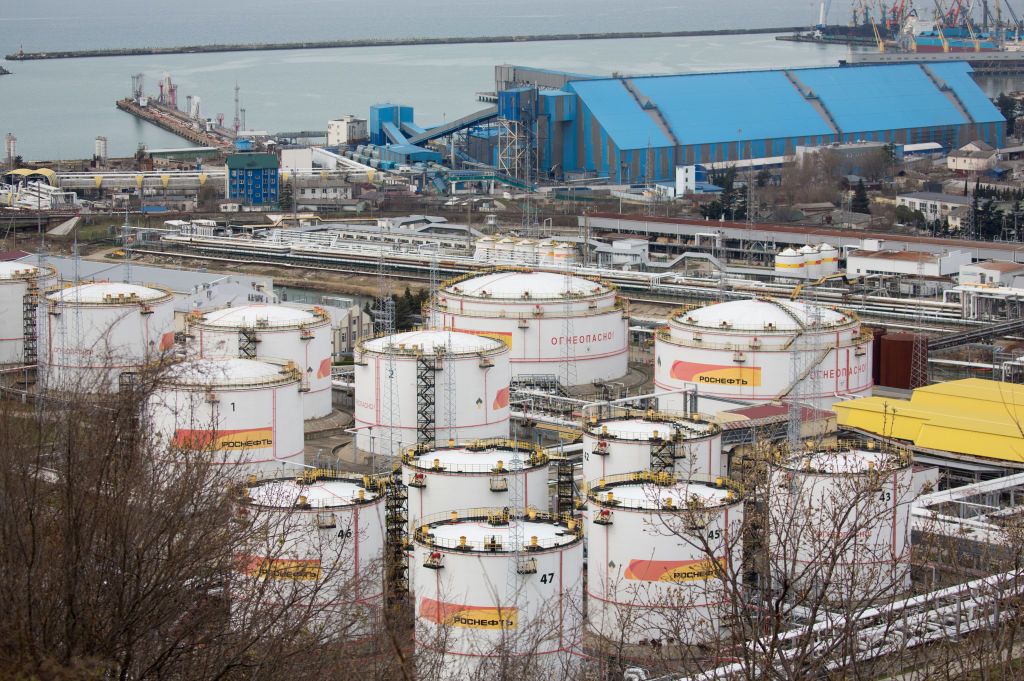A recent drone attack on an oil refinery in the town of Tuapse in Russia’s Krasnodar Krai has sparked tensions between Ukraine and Russia. The Russian Defense Ministry claimed that 102 Ukrainian drones were shot down overnight, including 44 over Krasnodar Krai, leading to a fire at the oil refinery in Tuapse. Video footage shared on Russian Telegram channels showed smoke rising over the town, but the fire was ultimately extinguished with no reported casualties. Ukraine did not comment on the claims, and independent verification of the reports was not possible. In a separate incident, drones and missiles targeted an oil refinery and seaport in Novorossiysk, causing explosions and power outages. These attacks on Russian energy targets have drawn criticism from U.S. officials, who fear the impact on the global energy market.
The drone strikes have not been limited to oil refineries, as drones operated by Ukraine’s military intelligence agency (HUR) reportedly hit production facilities of the state-owned Russian weapons manufacturing company “Basalt” in the city of Tula. This attack on a defense manufacturer’s facilities adds another dimension to the conflict between Ukraine and Russia. President Volodymyr Zelensky defended Ukraine’s actions, stating that Kyiv has the right to use its own weapons to strike deep inside Russia. Despite this justification, the attacks have raised concerns about the escalation of hostilities and the potential consequences on a larger scale.
The ongoing drone attacks represent just one aspect of the complex conflict between Ukraine and Russia. The use of drones to target key infrastructure and manufacturing facilities underscores the strategic nature of the conflict, with both sides employing unconventional tactics in addition to conventional military operations. The involvement of state-owned companies like “Basalt” further complicates the situation, as attacks on such facilities can have broader implications for the defense industry and national security of Russia. The international community is closely monitoring the situation, with U.S. officials expressing concerns about the impact of the attacks on the energy market.
Russia’s response to the drone attacks has been swift, with claims of shooting down a significant number of Ukrainian drones and taking action to protect key locations like oil refineries. The fires at the oil refinery in Tuapse and the explosions at the facilities in Novorossiysk highlight the potential for significant damage and disruption caused by drone attacks. The use of drones in modern warfare has changed the dynamics of conflicts, allowing for more precise and targeted strikes on critical infrastructure. As both Ukraine and Russia continue to engage in hostilities, the risk of further escalation and unintended consequences remains high, posing a challenge for international efforts to de-escalate the situation and find a peaceful resolution.
The conflict between Ukraine and Russia has broader implications beyond the immediate drone attacks, with the potential to impact regional stability and global security. The involvement of U.S. officials in condemning the attacks on Russian energy targets reflects the interconnected nature of the global energy market and the need for diplomatic solutions to prevent further escalation. As tensions continue to rise and both sides remain entrenched in their positions, the prospects for a peaceful resolution to the conflict appear increasingly uncertain. The use of drones as a tool of warfare in this conflict underscores the evolving nature of modern warfare and the challenges it poses for traditional notions of security and defense. Support for independent journalism in Ukraine is crucial in providing accurate and unbiased reporting on the situation, enabling a better understanding of the complex dynamics at play in the conflict.


